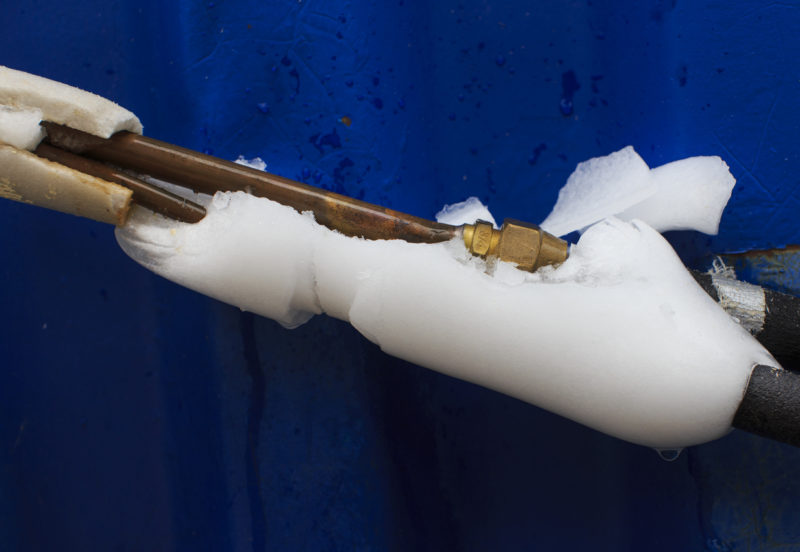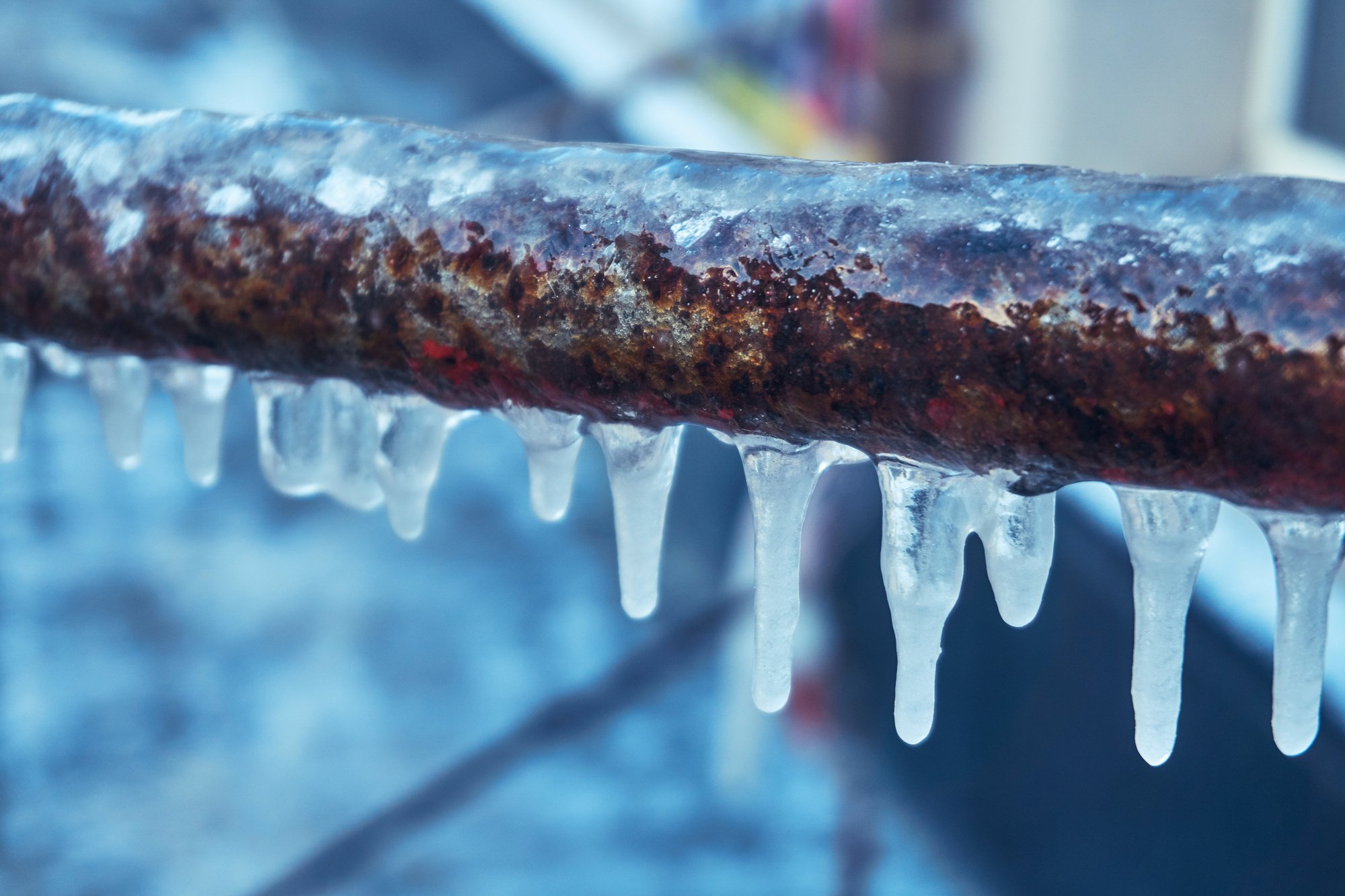Steps to Defrost the Frozen AC Pipe: Specialist Tips
Steps to Defrost the Frozen AC Pipe: Specialist Tips
Blog Article
The content in the next paragraphs about Why Is Ice On My Outside Air Conditione is incredibly enjoyable. Read it yourself and decide what you think of it.

Introduction
Finding that your air conditioning pipeline is frozen can be concerning, especially throughout warm summer months when you rely upon your air conditioner one of the most. Comprehending what to do in such a situation is crucial to stop additional damages to your cooling system and ensure your convenience inside your home.
Understanding the Causes
Several variables can add to the freezing of an air conditioning pipeline. Understanding these causes can help you attend to the concern efficiently.
Absence of Airflow
One common source of a frozen a/c pipeline is inadequate airflow. When the air flow over the evaporator coil is restricted, it can create the coil to drop below freezing temperature level, bring about ice formation on the pipe.
Low Refrigerant Levels
Inadequate cooling agent degrees in your air conditioner system can also cause a frozen pipeline. Reduced cooling agent degrees can create the pressure in the system to drop, resulting in the freezing of wetness on the evaporator coil.
Cold Weather Conditions
In colder climates, freezing temperatures outside can contribute to the freezing of AC pipelines. If your air conditioning unit is not effectively insulated or if there are leaks in the ductwork, cold air can penetrate the system, creating the pipeline to ice up.
Dirty Air Filters
Filthy or clogged air filters can limit air movement in your a/c system, causing various concerns, consisting of a frozen pipeline. It's essential to change or clean your air filterings system regularly to make certain appropriate air movement and protect against ice build-up.
Indications of a Frozen Air Conditioning Pipe
Recognizing the indications of a frozen AC pipeline is essential for punctual action.
Minimized Airflow
If you notice a considerable decline in airflow from your vents, it might show an icy pipe.
Ice Buildup on the Pipe
Visible ice accumulation on the cooling agent line or the evaporator coil is a clear sign of a frozen air conditioning pipeline.
Odd Sounds from the Unit
Uncommon audios, such as hissing or gurgling, coming from your AC unit can indicate that there's ice present on the pipe.
Immediate Actions to Take
When faced with a frozen air conditioning pipeline, it's important to act swiftly to avoid additional damage to your cooling system.
Turning off the AC
The first step is to switch off your a/c unit to prevent the system from running and worsening the issue.
Looking for Blockages
Check the area around the interior system for any blockages that may be blocking air movement, such as furnishings or curtains.
Defrosting the Pipe
You can utilize mild techniques like positioning towels soaked in warm water around the icy pipe to help thaw it gradually.
Safety nets
Taking preventive measures can aid avoid future events of a frozen a/c pipeline.
Regular Maintenance Checks
Arrange normal maintenance contact a professional HVAC service technician to make certain that your a/c system is running effectively.
Transforming Air Filters
On a regular basis change or clean your air filters to prevent air flow constraints and keep optimal performance.
Insulating Exposed Pipes
If your air conditioning pipelines are subjected to cool temperature levels, take into consideration shielding them to prevent freezing during winter months.
Seeking Professional Help
If DIY approaches fall short to deal with the issue or if you're unsure concerning just how to continue, it's ideal to look for support from a qualified HVAC professional.
When DIY Methods Fail
If your efforts to thaw the pipe or address other concerns are unsuccessful, it's time to hire a professional.
Value of Hiring a Professional HVAC Technician
A certified HVAC professional has the experience and tools necessary to identify and fix problems with your AC system safely and effectively.
Final thought
Handling an icy AC pipeline can be a frustrating experience, however recognizing how to react can aid minimize damage and recover comfort to your home. By comprehending the reasons, recognizing the signs, and taking timely activity, you can successfully resolve the issue and avoid future incidents.
Frozen AC Line: Why It Happens & What To Do About It
A frozen AC line can be a rather peculiar sight in a place like Phoenix, Arizona where nothing ever freezes. In this post, we’ll discuss what makes an air conditioner line frozen – and what you can do about it.
Dirty Air Filters
Did you know that you should be cleaning or replacing your air filters on a monthly basis? Failing to do this can result in airflow issues that, in turn, cause your evaporator coils and lines to freeze over. You’ll notice a buildup of ice on both components, although the buildup on your pipes will, of course, be more evident unless you open your air condition up to reveal the coils.
What To Do About It
Give your air filter a good cleaning if it’s reusable. If not, replace the filter outright. Next, switch your air conditioner’s fan setting on and leave it there for 2-3 hours. This will draw warm air in, helping to thaw your evaporator coil. You can also check out this article for some tips on cleaning the coils themselves if you’d like to speed the process up. Before you switch the unit back to its normal state, make sure the supply vents are completely unobstructed and free of dust or other debris.
If you keep having this issue even after replacing your filters regularly, contact a local HVAC repair company and have them inspect your evaporator coil, ductwork, and any other components that may be at fault. If you live in the Phoenix, Arizona area, give American Home Water and Air a call.
Low Refrigerant Levels/Leakage
What To Do About It
Contrary to what air conditioner “recharge” companies often tell their clients about refrigerant, it should never need to be simply refilled. You see, refrigerant runs in what experts refer to as a “closed loop.” Refrigerant really shouldn’t be leaving that loop. If it is, you’ve got a leak.
Paying someone to come and pump more refrigerant into your system (aka “recharge” it) isn’t the solution. Doing that will simply kick the can down the road. Besides, refrigerant leaks can be harmful to the environment and people in your home.
Rather, you need to take care of the leak with the help of a technician. Check out this article for some more information about dealing with air conditioners that are leaking refrigerant. Before you contact a technician, switch your thermostat to the off position. Then, switch the fan setting on and let it run for 2-3 hours so the unit can thaw.
Improper Temperature Setting
Improper temperature settings can also cause a drop in your air conditioner’s pressure. What many people don’t realize is that air conditioners are actually designed to run when temperatures have fallen above roughly 60 degrees Fahrenheit. If you run the unit when it’s cold outside, you’ll run into many issues, including frozen components.

I was made aware of that write-up about What Do I Do If My AC Pipe Is Frozen through an associate on another web address. If you please take the opportunity to distribute this content if you enjoyed it. Thanks for your time invested reading it.
Find Out More Report this page